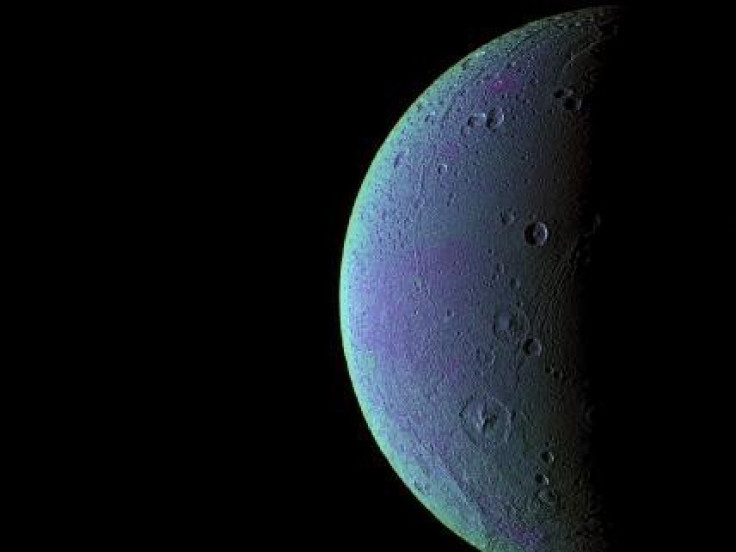Oxygen Detected in Saturn's Dione Moon
Nasa's Cassini spacecraft has detected the presence of oxygen ions around Saturn's icy moon Dione for the first time.
Nasa has reported that the oxygen ions present on Dione moon are quite sparse and showed that Dione has an extremely thin neutral atmosphere, while Saturn's largest moon, Titan, has a much denser atmosphere.
The study done by an international team led by Los Alamos National Laboratory, Los Alamos, New Mexico, has been published in Geophysical Research Letters.
Saturn's moon Dione was discovered in 1684 by astronomer Giovanni Cassini. It orbits Saturn at roughly the same distance as our own moon orbits Earth, a Science Daily report said.
"The concentration of oxygen in Dione's atmosphere is roughly similar to what you would find in Earth's atmosphere at an altitude of about 300 miles," Science Daily quoted Tokar a Cassini team member based at Los Alamos National Laboratory as saying.
He added that the presence of oxygen ions in Dione is not enough to sustain life, but said that with similar observations of other Saturn and Jupiter's moons could divulge more details about their habitability.
Nasa launched Cassini spacecraft, named after Giovanni Cassini, in 1997 and sent it on the first leg of its journey to Saturn. Cassini detected the oxygen ions in Dione's when it flew by the moon two years back in 2010.

© Copyright IBTimes 2024. All rights reserved.





